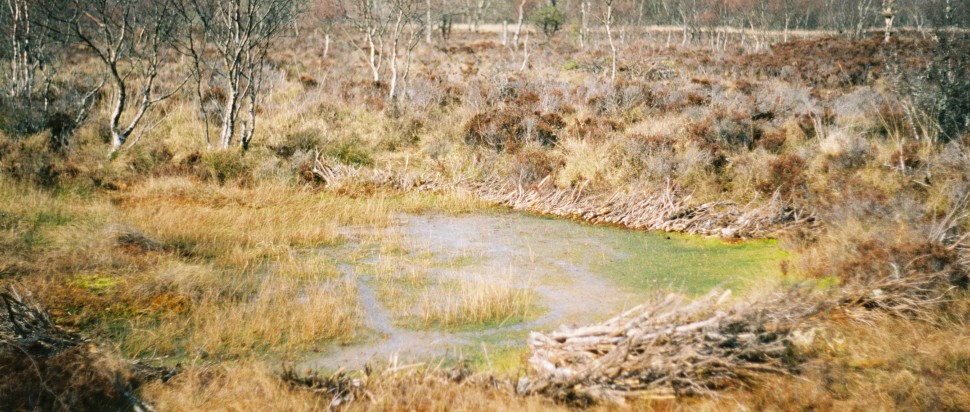GSA Degree Show 2023: School of Simulation and Visualisation
Students graduating from the GSA School of Simulation and Visualisation have a shared interest in sustainability, and approach to audience engagement
The School of Simulation and Visualisation’s studios are based at Pacific Quay, a media hub for Glasgow, and students graduating from BDes Sound for Moving Image and BSc Immersive Systems will be exhibiting work in the Haldane building. The practices of graduating SimVis students illustrate a shared interest in sustainability, in their choice of materials and approach to audience engagement. A range of digital media, sound, and programming has been utilised to create fully formed, imaginative spaces for an audience to be immersed in. Reflected in the work are the concerns of an emerging generation of artists and designers. Ecological and political issues are discussed confidently, alongside creative narratives that address complex topics.
Michiel Turner’s experimental, painterly animation Seaweed incorporates 3D collage materials which may have been found washed up on a beach, or in a scrap box. The disjointed nature of stop-motion animation marries with glossy and untroubled sound. Reminiscent of King Krule’s deep vocals paired with Shlohmo’s Bad Vibes; unphased guitar compositions and reverb add a depth synonymous with echoes of an ocean landscape. The narrative is ambiguous and possibly untrue, though any watchers of Attenborough’s Blue Planet will understand that its idea is undoubtedly plausible. Investigating the probability of finding ecological equilibrium between materials and organisms, Michiel uses hallucinatory visuals and proposed reality to incite a world of utopian balance.
In Owen Burns’ practice, famous paintings are recreated in 3D images and animation, translating the historical into a reimagined accessible form, relevant to the contemporary. Kandinsky’s Joyous Ascent is animated to music by Ezra Collective, cyclically returning to the original artist’s intent to marry shape and sound. The animation is energetic, and intricately deconstructs the painting into shapes that communicate with one another. Owen is graduating from Immersive Systems, and they will also exhibit an educational reconstruction of the 16th century Tantallon Castle, situated in East Lothian. The interactive environment was made using Autodesk Maya and Unity, and allows the viewer unrestricted access to a heritage site.
Comparatively, there is a cyclical thread running through Eve King’s work, as they explore the feedback loop that consumer, mineral resource, and waste are trapped within in the electronics industry. Eve describes using data as material in their audiovisual installation, Obsolete Components, which aims to "create meaning amongst chaos”. It employs the use of ten analogue televisions and a six-channel speaker system, alongside images referencing planned obsolescence in consumer technology. Symbolically, stark cobalt blue emanates from the television screens, and dually, this same mineral is implicated in the industry under critique. Eve’s practice is both introspective, and aware of the interdependence of human behaviour on nature and consumer capitalist society.
Andy Speirs recreates accurate renditions of architectural spaces and urban environments, which are 3D modelled and textured in Blender and 3Ds Max. Andy's dissertation investigates the question: Do immersive systems enhance spatial awareness in architectural visualisation? It references The Pond House, an award-winning design by Technique Studio. In the artist’s studio project, they explore humans’ connection to artificial, built-up or urban environments. Andy chose to create a detailed virtual copy of a street from the route he took to work, whilst living in Hong Kong. In turn, Andy reflects his own attachment to the landscape, through the intricacy of the recreation.
Keira Mccombie’s sonic sculpture, Echo’s Reflection, readdresses the audience’s role as participant. We can become immersed in our own sound, in turn formed by our interaction with an instrument. Keira dissects the term ‘generative music’, coined by Brian Eno, to suggest that sound can occur in response to a person’s touch, rather than generated by a system, therefore asserting power to the listener. The instrument, fabricated sustainably from scrap metal, is suspended with speakers on either side, to reflect the sound back into the space. Within this self-reflective environment, a participant can use utensils, or their hands, to physically engage with the sculpture, using sound as a therapeutic tool.
Similarly, Alexandra Bell explores sound as a medium for respite and escapism. In The Wave is not the Water, an immersive sound and light installation, Alexandra has generated imagery in response to vibrations from composed sound. The viewer is invited to leave behind any anger and politics associated with their perception of society, momentarily. The space is transformed into a visually and aurally meditative environment, separating the reality of everyday stresses and tribulations through the use of solfeggio frequencies. Graduating from Sound for the Moving Image, Alexandra describes this as “the primordial cosmic tones of mental and physical healing”.
The School of Simulation and Visualisation Degree Show runs 2-11 Jun in the Haldane Building, 24 Hill Street, Glasgow. It is also available to view online at gsashowcase.net
